The Euglena Future Material Conference 2020 was held live on August 31, 2020, sponsored by the Euglena Research and Development Division. At this event, presentations and discussions were held on the direction of food development in space and the possibilities of microalgae, etc., as prospects for food materials required in the future. This time, I will introduce a part of it by transcribing it. This time, as the second part, we will talk with Remi Enomoto, who is active as a space caster, and Kengo Suzuki, Executive Officer in charge of research and development at Euglena. (Click here for the first part)
Make SF non-fiction
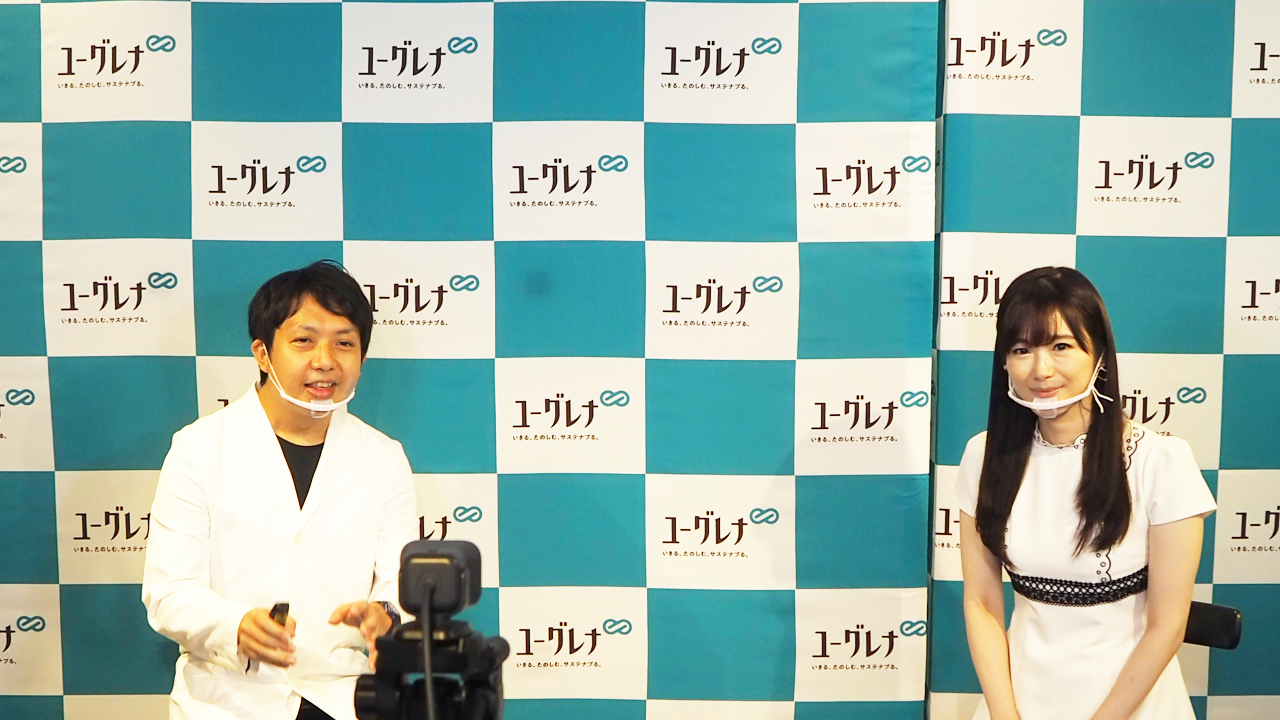
Kengo Suzuki (hereinafter referred to as Suzuki): Hello. My name is Suzuki and I am Our and an Executive Officer in charge of research and development. From here, I would like to talk about the possibilities of space food and Euglena to consider future food and food tech from the aspect of research and development. Thank you for your continued support.
Remi Enomoto (hereinafter referred to as Enomoto): Thank you.
Suzuki: Before getting into the main subject, I would like to introduce myself. I was involved in Our as a founding member in 2005 while I was a graduate student at the University of Tokyo. Since then, we have been conducting research and development on the microalgae Euglena for about 15 years. Currently, in addition to Our, Ltd., he has been appointed as a visiting professor at the Malaysian Institute of Technology and a specially appointed professor at the Tohoku University Graduate School.
Today, I would like to talk about the theme of "making science fiction non-fiction." In other words, how Euglena and the microalgae Euglena contribute to the reality (non-fiction) of "human beings staying in space for a long time", which is a typical theme of science fiction (SF). I would like to introduce you to what you can do.
Euglena 's characteristics and possibilities
Suzuki: Before touching on the possibilities of Euglena in outer space, I would like to first introduce the characteristics and possibilities of Euglena The most important feature is that it photosynthesizes like a plant, but has flagella and moves around like an animal. It is very characteristic that it has both plant and animal properties. Because of these properties, it contains 59 kinds of abundant nutrients such as those derived from plants and animals.
Enomoto: It's very strange, isn't it? It's interesting that even though it's a plant, it moves like an animal.
Suzuki: That's right. Since it has no cell wall, it is easy to digest and absorb when eaten, and it contains a component called paramylon, which only Euglena It also has the interesting property of converting paramylon into oil in a low oxygen environment. Taking advantage of its characteristics, Euglena is engaged in the biofuel business.
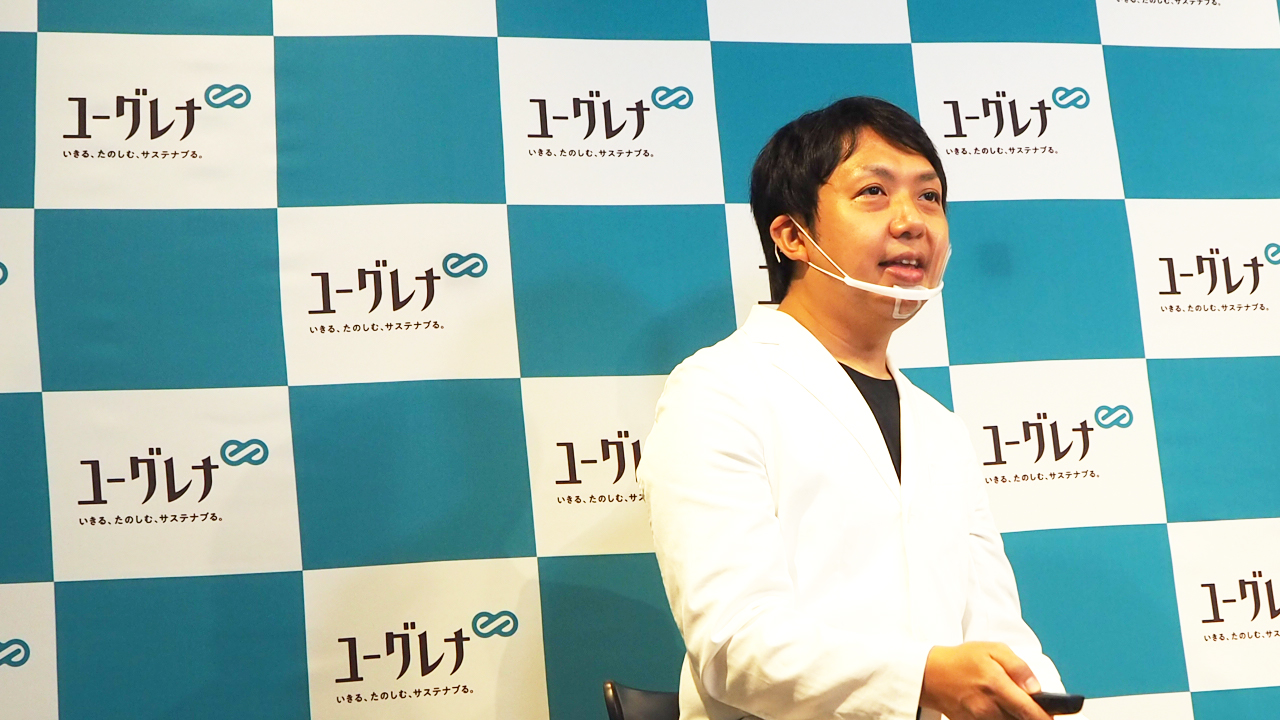
Enomoto: I see, but it's a little pity to have a low oxygen environment.
Suzuki: That's right. However, by creating a low oxygen environment, oil can be stored efficiently, making it a valuable raw material for biofuels. It's a little pity, but he's doing his best for the earth.
Euglena has used Euglena as a food, cosmetics and biofuel. In addition to these, there are various other uses, and recently we are also working on development as fertilizer and biomass plastic.
By adding the ingredients of Euglena to fertilizer, I think that the bacteria in the soil will be activated and the crops will grow.
Enomoto: Is it fertilizer? It's good for the human body, so it's good for plants.
Suzuki: That's right. By mixing Euglena in the soil, we have found that it has the effect of activating soil bacteria and has the potential to support the growth of plants.
We are also developing biomass plastics using the leftovers from the process of refining biofuels from Euglena. Currently, we mix 50% (that is, 1: 1 ratio) of plastic derived from Euglena with conventional plastic to make forks and spoons, but in the future we will increase the mixing ratio of biomass plastic and eventually Would also like to develop products derived from 100% Euglena.
If it is realized and used a lot, the use of fossil-derived components will be reduced, and I think it will contribute to the creation of a sustainable environment that is kind to the earth.
.jpg)
Enomoto: The color is not green (laughs)
But it's good! Paper straws will quickly become soggy, so I would like you to sell plastic straws derived from Euglena as soon as possible.
Suzuki: So far, we have introduced the features of Euglena that we have known so far, and the possibilities for the future, but in fact, we are also working to find a new kind of Euglena. increase. From 2019, it is an activity named "Euglena Project for Everyone".
Euglena has already been confirmed to have more than 100 types, but it is said that there is a high possibility that there are still types that have not been found. We are dealing with something named Euglena Glaciris. We are currently working on a project to find a new species of Euglena by collecting water from ponds nationwide with the cooperation of volunteers in search of various variations of Euglena. We also use crowdfunding to send water algae from all over the country. By doing so, I think that delicious Euglena may come out from local water algae. In that sense, I find this project interesting. In the future, I would like to discover Euglena with new features such as the more delicious Euglena and work on the development of new products.
Changing values about "food"
Suzuki: Now, let's talk about the universe. "SPACE FOODSPHERE", in which Euglena participates, has set up a scenario in which 1000 people live and live on the lunar base in 2040. First of all, I would like to contribute in the field of "food" in order to realize a long-term stay in outer space. It is also a premise, but I think that it is important not to simply develop space food, but to work on development based on the currently changing values for "food". increase.
Enomoto: I see.
Suzuki: I think that the current values of "food" are mainly formed by the three axes of "price, taste, and health." However, I think that it will be updated to the axis of "environment, five senses, health" in 2040. What this means is that the price axis of "cheap or expensive" is currently important, but by 2040 the price axis will not be so important and the environmental axis of "good or bad for the environment". Is likely to become important. Currently, the taste of "taste" is an important axis, but I think it will be updated to the axis of "enjoying with all five senses." Regarding the axis of health, it is still an important axis, but I think it will become more important in 2040.
Regarding space food, I think it is necessary to assume such changes in values, and I think that space food that has less environmental impact, can be enjoyed with all five senses, and is good for health is required.
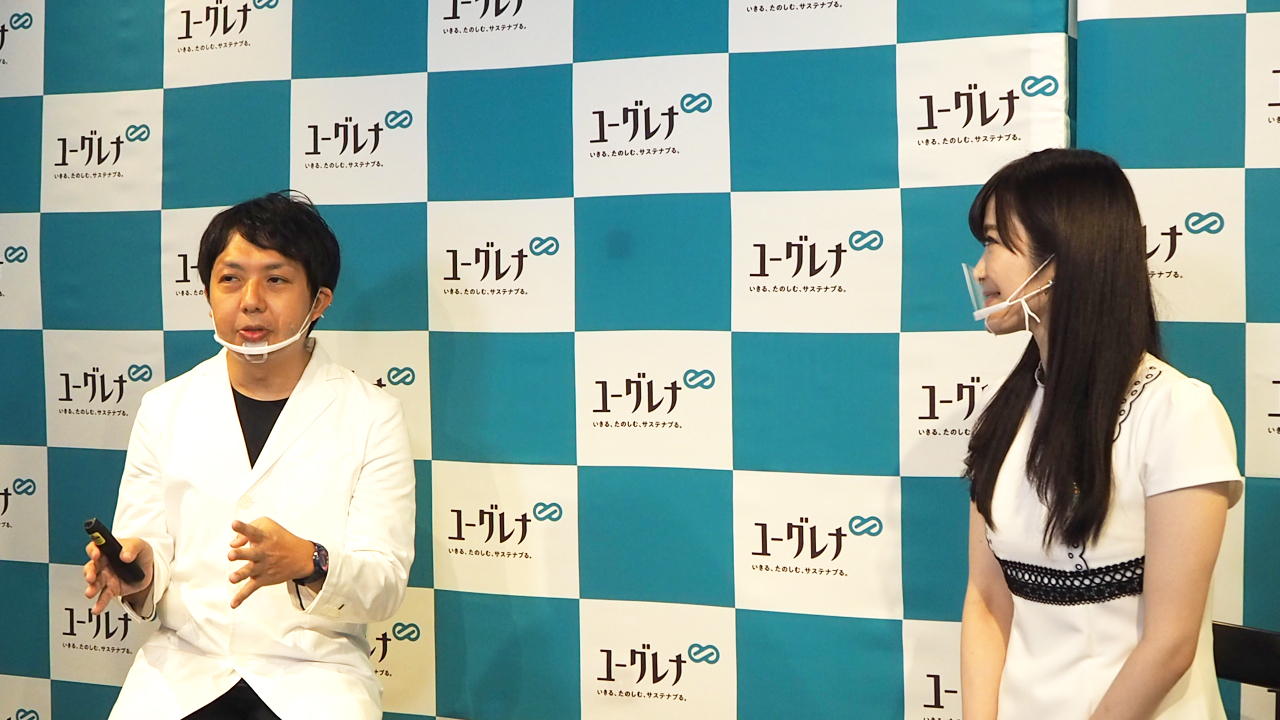
Enomoto: It is true that SDGs (Sustainable Development Goals) are still commonplace, so 20 years from now, there may be more interest in environmental impacts.
Euglena Health Promotion
Suzuki Euglena 's research and development of future "food" and space food from the three axes of values related to "food." First of all, about health-related efforts.
When it comes to health, we recognize that it is a common issue both in outer space and on Earth. In particular, how to bridge the gap between average life expectancy and healthy life expectancy is a major issue. Currently, this gap is over 10 years old in Japan, but it may be further widened in the future due to the development of medical technology. At the same time, there will be problems such as anxiety about whether or not you can live a healthy life, long-term care problems, and the burden of social security. Euglena wants to work on extending the healthy life expectancy of people with "food" and closing this gap. From that perspective as well, I would like to contribute to society.
You include a variety of ingredients in your diet for nutrition and health purposes, right? Euglena to be incorporated there.
Euglena can be expected to improve immunity and relieve stress symptoms in addition to nutritional supplementation. We believe that it will lead to an increase in the base for building a healthy body. I think this is very good not only for life on Earth but also for long-term stays in outer space in the future.
Enomoto: Euglena can be expected to improve immunity and relieve stress symptoms.
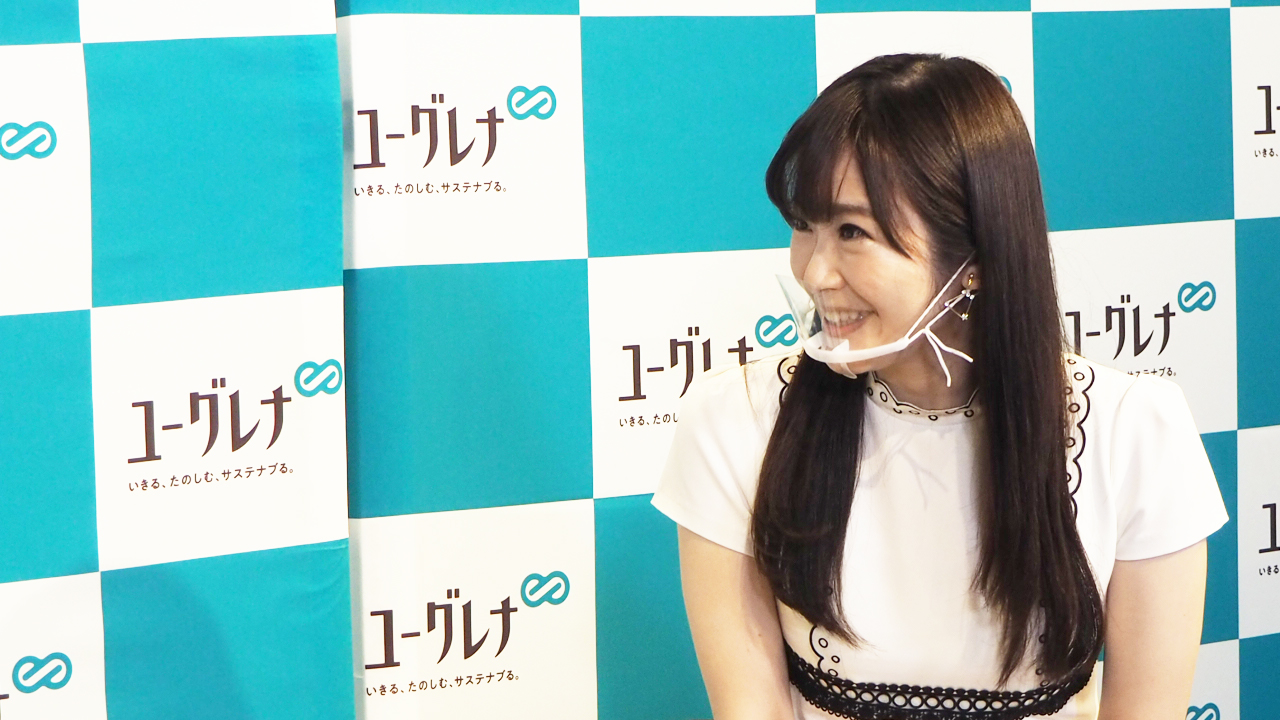
Suzuki: There are various other research results such as improvement of sleep quality. We believe that it is important to make the body fundamentally healthy, not temporary health, so we are developing products suitable for that purpose.
Enomoto: That's right. I'm looking forward to it.
Development of space food with low environmental load using Euglena
Suzuki: Next, I would like to talk about the ideal form of space food, which has a low environmental impact. Food production in space, but not everything can be brought to space or the moon. Research in this area is being conducted because it needs to be circulated in outer space. Considering space food from the axis of environmental load, we come to the idea that it is important to circulate resources in outer space to produce food, rather than bringing in a lot of things from the earth. Euglena, we have already succeeded in culturing Euglena using carbon dioxide emitted from thermal power plants and domestic wastewater from water treatment plants. We are trying to clean up resources such as sewage and wastewater that are discharged in human life, create oxygen, purify water, and make it ready for use again for food production. As a result, you can increase the Euglena
Enomoto: Euglena improve the environment and make it edible?
Suzuki: According to a trial calculation, Euglena culture device for two drums (about 400L), you can sustain human life.
Enomoto: Is it about two drums? It's a smaller facility than I had imagined.
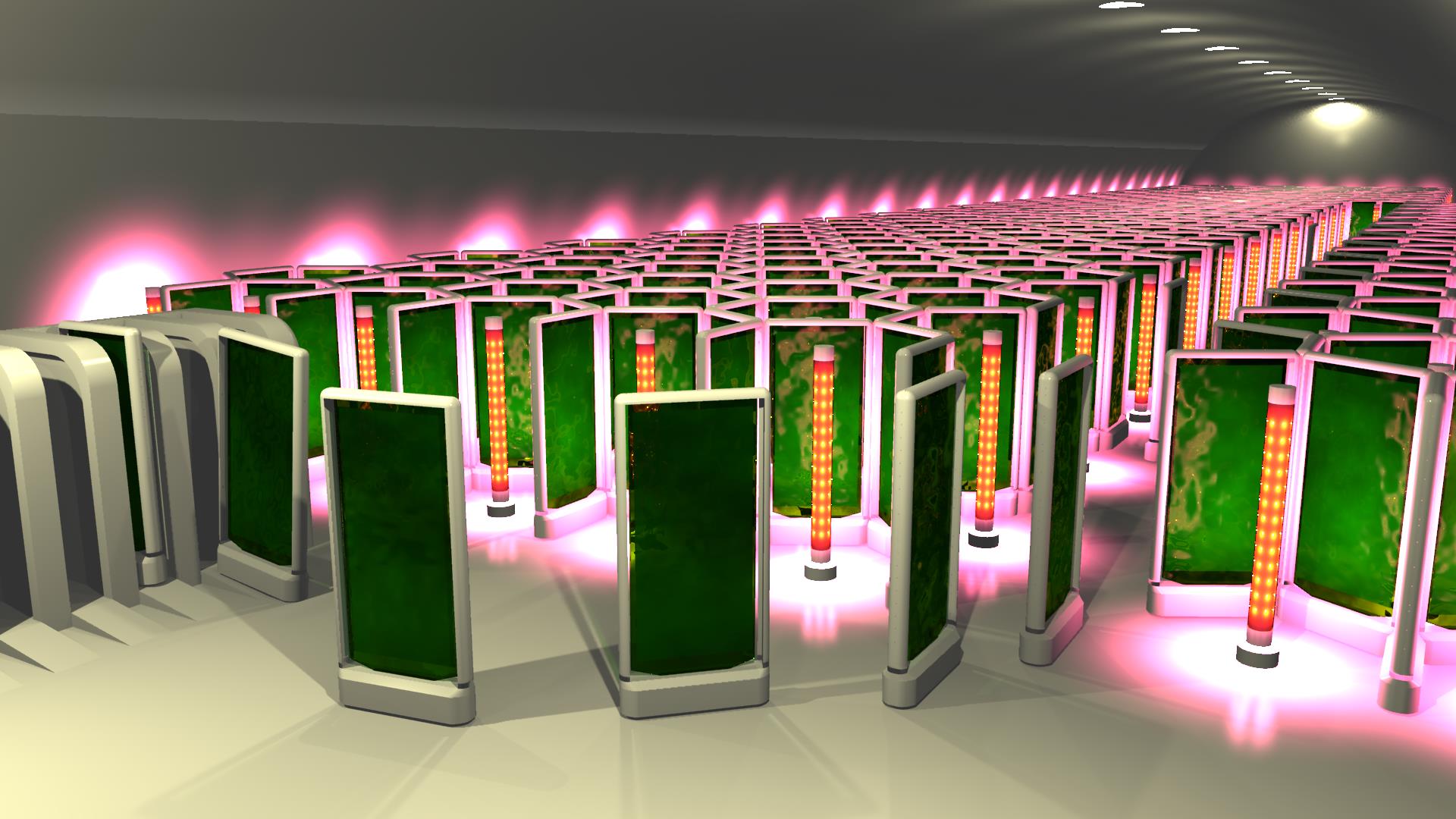
Enomoto: By the way, Euglena has a very beautiful green color.
Suzuki: Yes. That's right. I am studying and healed by the green color of Euglena
What we are researching by 2040 is to efficiently produce proteins and reduce the environmental load including the parts to be delivered. By that time, we expect the population to reach 9 billion, so we are thinking about avoiding food shortages. Euglena is less than that of livestock such as cattle, and it is known that there is a potential to produce with a considerably low environmental load. increase. Euglena also has animal properties, so it is said that its composition is closer to that of animal proteins than soybeans, and its absorption efficiency is good.
Enomoto: Euglena moves around using flagella, so the protein composition is close to that of animals, isn't it?
Euglena to enjoy delicious and enjoyable space food
Suzuki: Finally, I would like to talk about space food that entertains the five senses. I think food is entertainment.
Enomoto: I had a soup with Euglena at an event related to Space Food Sphere. It was very delicious.
Suzuki: I think it will be delicious depending on the cooking. Since various members such as food manufacturers and cooking schools are participating in the Space Food Sphere, Euglena 's space food will be improved steadily.
Enomoto: Euglena 100% hamburger steak when it tastes good.
Suzuki: Of course.
Last but not least, Euglena 's research and development of space food solves global environmental problems and "food" problems by providing three elements: low environmental load, low cost, and high nutrition. I think it will lead to. In the future, I would like to continue research and development in the field of "food" including space food, based on sustainable values.

Graduated from the University of Tokyo, Faculty of Agriculture, majored in biological system engineering, founded Euglena Co., Ltd. in August 2005, and became a director and general manager of the R&D Department. In December of the same year, we succeeded in the world's first large-scale cultivation of the world's first edible outdoor mass culture of microalgae Euglena (Japanese name: Astragalus). In 2016, he received a doctorate in agriculture from the University of Tokyo. In 2019, he received a doctorate in medicine from Kitasato University Graduate School. While engaged in research on the utilization of microalgae Euglena and other algae, he is also engaged in research aimed at the development of biofuel production derived from Euglena.
榎本麗美プロフィール画像-1.jpg)
Born in 1983. Born in Chiba prefecture, graduated from Teikyo University Faculty of Science and Technology, Department of Bioscience. Joined the Nishinippon Broadcasting Announcement Department in 2005, then became a freelance announcer and appeared in "Nippon Television News24". He holds qualifications such as disaster prevention officer and starry sky guide. Belongs to North Production.
Remi Enomoto YouTube Channel: Remi Enomoto's Sky!
* This article has been revised and posted based on the event coverage of Euglena

![To make science fiction non-fiction. Space food and Euglena [Part 2] Euglena Kengo Suzuki](https://www.euglena.jp/wp_02/wp-content/uploads/2020/10/アイキャッチ画像-2.jpg)